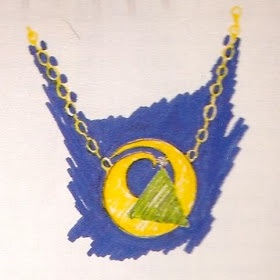There is nothing new or shocking (to those who know me at all if not well) that I have been a Star Trek fan for as long as I can remember. And while I will not claim to have been to Hell and back, it is probably fair to say that I experienced some trauma during my “formative years”.
I delayed my initial post regarding Leonard Nimoy’s passing by a few days, partly out of respect and partly because I needed time to process. I am still processing. It was his portrayal of Mr. Spock that ironically provided a much younger me with a sense of emotional stability.
The Vulcan way is part of a body of fiction, of course; I do not embrace it as a way of life. It merely informs some of my “navigation”. In all honesty, though I have a lasting affection for Star Trek, it never presented any alien species as a whole and complete culture.
Klingons, it could be argued, are more richly detailed than any others but a ritual-of-the-week and appropriation of Shakespeare makes them just the boldest cypher of the lot. Vulcans run a close second oddly enough. All of the alien cultures started as metaphor and have become stereotypes in their own right.
Within the past few days my ‘processing’ has led to adjusting the schedule of my novels-in-progress. For a very long time I have wanted and needed to write for Vulcans as more than computers on legs from a volcanic desert world.
My very good friend, Leanna Renee Hieber hurried to tell me of Mr. Nimoy’s passing while already rushing between her programming commitments during AnachroCon. She knew what it would mean and took special care to break the news in a kind and gentle way – rather than it coming by way of a stranger’s shouted announcement amid convention chaos. As she made her way to the next panel, I drew a portrait of the actor who played one of my heroes:

His final words/Tweet compel: “A life is like a garden. Perfect moments can be had, but not preserved, except in memory. LLAP”
Spock’s people are known for their respect for Infinite Diversity in Infinite Combinations (k’lalatar prkori k’lalatar prnak’lirli) and the IDIC symbol. Gene Roddenberry stated the symbol “has great meaning to all Vulcans”. He indicated that it was somewhat comparable to a religious symbol. Outside of fiction, the symbol itself is 47 years old.

Comprehension and embrace of diversity still eludes us. Some efforts at celebration of diversity can cost us opportunities for unity. We still need the IDIC.
If nearly every Vulcan we have ever seen is just like Spock why would they venerate diversity? How could it mean so much to them if they were not natively host to quite a range?
All this to say: a novel concerning Vulcan memory, truth, and culture has moved to top priority – at the urging of Ms. Hieber, who will be coauthor of the work. The working title is “All We Now Hold True“. (In the Vulcan language, that is the title of this blog post. Thanks to Britton Watkins for the translation.)
Please do feel invited to Follow, Like, and/or comment.
—








